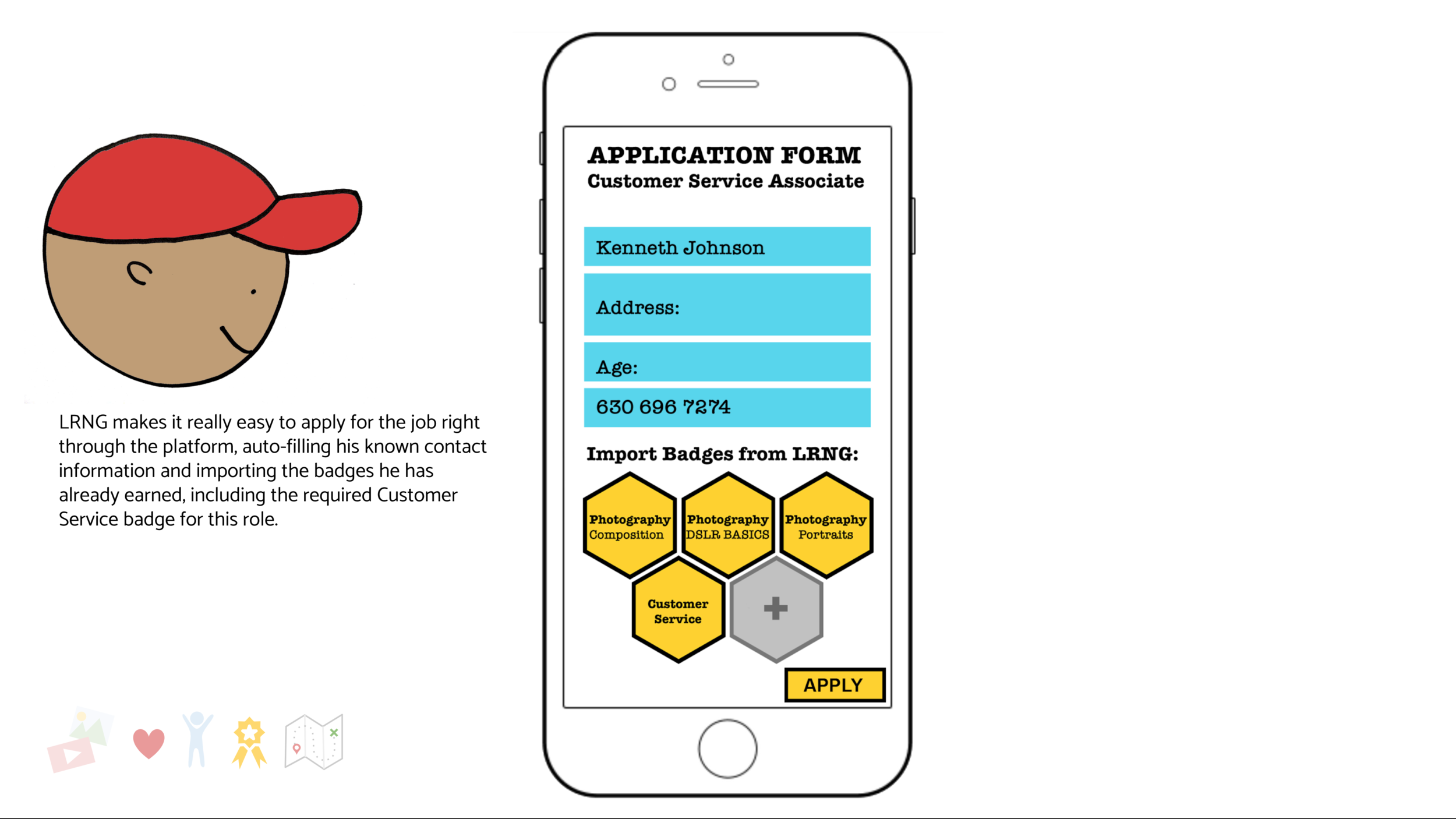Imagining New Futures for LRNG
- ux & stratey recommendations
LRNG is a learning platform that builds pathways to unlock opportunities for people in cities and working to ensure an equitable future of talent for the 21st-century workplace. Working with cities and organizations to connect learning experiences to career opportunities and college credit, LRNG ensures that all young people, especially those from underserved communities, have the inspiration, guidance, and skills needed to prepare them for life and work in the modern economy.
The Challenge
LRNG’s offering doesn’t currently fit into the youth’s existing mental models of options for how to spend their time. To understand where LRNG fits in, what are the barriers to discovering and trying it, and how does LRNG reach youth through physical channels.
Social media is a huge opportunity, but it appears that LRNG uses Facebook and Twitter to communicate with supporters and other adults, NOT to engage youth. We couldn’t find a presence for LRNG on Instagram or Snapchat, which are the primary social media channels for young people (according to an April 2017 NORC survey) with over 75% using them. For black teens specifically, 40% say they use Snapchat almost regularly, and 33% use Instagram constantly.
Additionally, We could not find evidence that youth are using these channels to talk about their activities. Compare that with social media phenomena like the ice bucket challenge, where people were inspired to do a new kind of action by observing others taking part in it. In other words, the Ice Bucket Challenge effectively used social media for “social proof,” while LRNG is still using it as a traditional communication channel.
Finally, we could find no easy way for youth already on the LRNG platform to share their activities with other users or with non-users.
All the above poses a challenge for youth to finding out about LRNG and choosing to participate.
Design Consideration
What role do motivations and rewards play in opportunity youth engagement with LRNG?
What role do supportive relationships with peers and adults play in encouraging youth in LRNG use?
What encourages opportunity youth to engage in learning experiences on LRNG?
Research Questions
How might we connect youth through different channels and activities
To Help youth discover a potential vision for the future (new ideal self)?
Support change by providing opportunities to practice within a group and get feedback?
Provide social reference groups that define desirable behaviors and support new identities?
Provide direct access to mentors and more experienced peers?
LRNG current journey map
User Research


HOW MIGHT WE?
Focus on early career opportunities. We know that we need youth to develop their careers, but we feel this focus will help them take the first step– a step that is missing for many kids in this demographic. By bringing in large numbers of companies who are hiring for entry-level workers and making LRNG the marketplace for those jobs, we can directly connect from the learning to the opportunity.
Self-efficacy and intrinsic motivation are about exposing them to extra-curricular activities that help them discover who they are, their skills, and what they can be. It is a missing piece between these kids, who are ordinarily steered directly to trades and exposed only to standards-based learning, and affluent young people.
Feedback, encouragement, and motivation are about helping kids recognize that they have strengths, understand their gaps, and build on them through enabling and supportive relationships from peers, teachers, community organization leaders, and volunteer coaches and mentors.
OUr Findings
Engaging content: Even enticing rewards are unlikely to encourage youth to view content that is not innately interesting, not relatable in terms of their social context, or not immediately useful. Content that is inherently exciting increases curiosity and motivation. (Fogg Behavior Model and Love of Learning)
High ability: This means a low barrier to entry (e.g., open to everyone), easy to submit evidence, and easy to earn badges for things they already know (give them the loyalty card with two holes already punched). (Fogg Behavior Model, Bandura Self-efficacy, Kahneman Behavioral economics)
Support: We know from intentional change theory (Boyatzis) and self-determination theory (Deci and Ryan) that people need supportive relationships that reflect their skills and gaps and offer feedback to succeed. This is missing for most opportunity youth. Seligman p.174: "...it is a myth that a child's talent will either surface or survive without support from others."
Meaningful recognition: Deci, Koestner, and Ryan, p. 694: "However, rewards that do not have a clearly stated high-performance standard (e.g., do not require beating other people's performance) signify that the task is not relevant for gaining competence affirmation and that the rewarder does not value the task; thus, they decrease intrinsic motivation."
Credible evidence: Without role models, seeing other people like them succeed, clear pathways to opportunities, and social support, youth lack the self-efficacy and optimism required to create the ideal self. Boyatzis: "The ideal self is composed of three major components: an image of the desired future; hope (and its constituents, self-efficacy, and optimism); and a comprehensive sense of one's core identity (past strengths, traits, and other enduring dispositions)."
Storyboard















The Outcome






